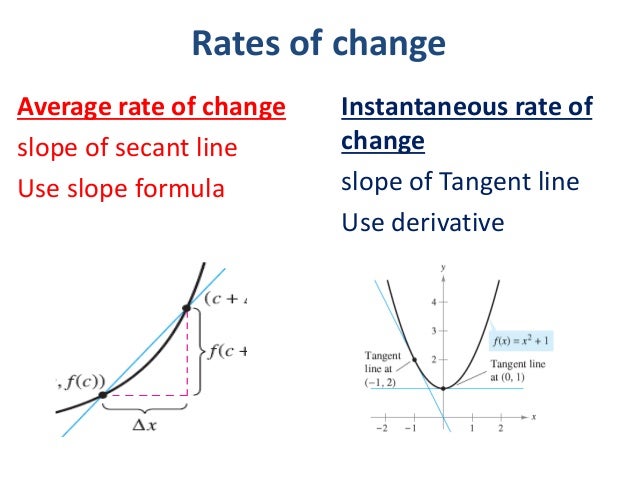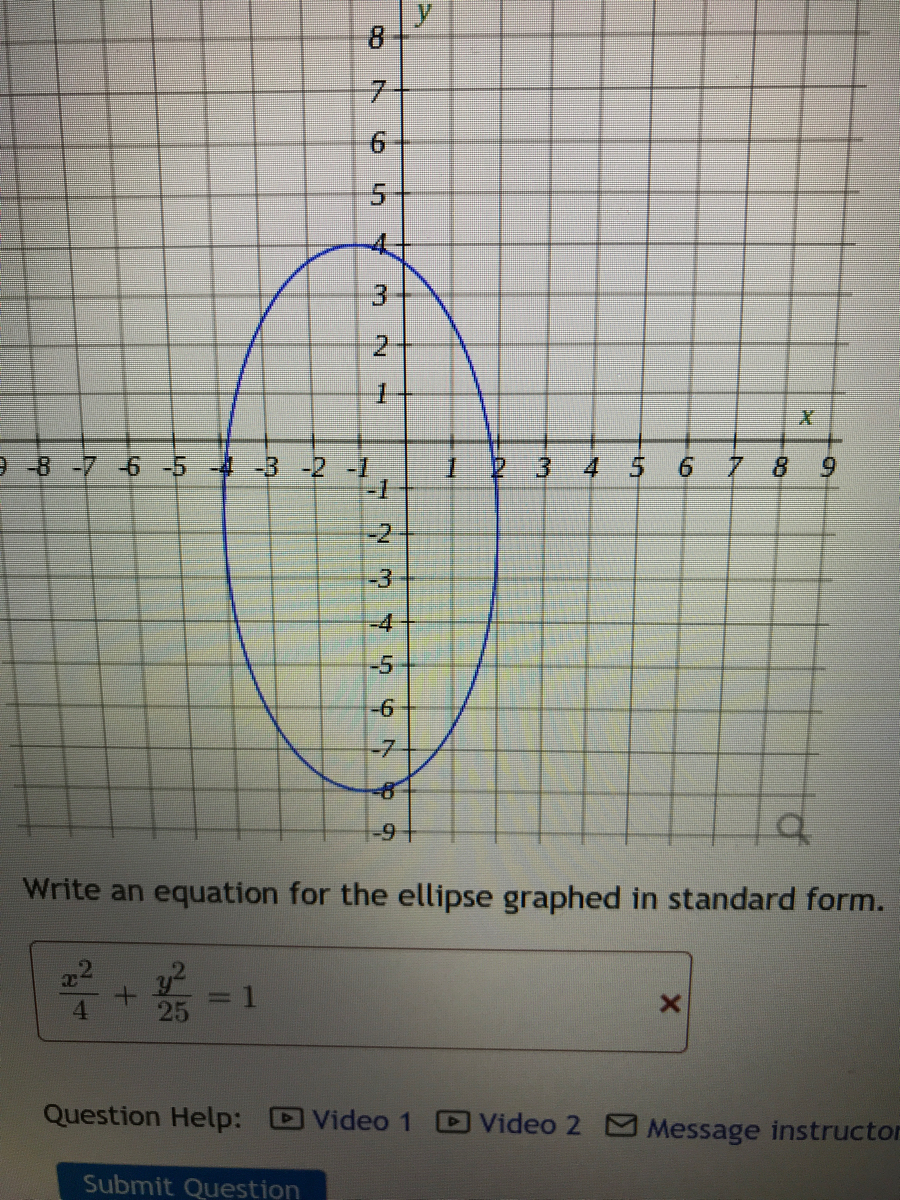- 4.3 Related Ratesap Calculus Solver
- 4.3 Related Ratesap Calculus Problems
- 4.3 Related Ratesap Calculus Calculator
- 4.3 Related Ratesap Calculus 14th Edition
Say you’re filling up your swimming pool and you know how fast water is coming out of your hose, and you want to calculate how fast the water level in the pool is rising. You know one rate (how fast the water is being poured in), and you want to determine another rate (how fast the water level is rising). These rates are called related rates because one depends on the other — the faster the water is poured in, the faster the water level will rise. In a typical related rates problem, the rate or rates you’re given are unchanging, but the rate you have to figure out is changing with time. You have to determine this rate at one particular point in time.
For example, say you’re blowing up a balloon at a rate of 300 cubic inches per minute. When the balloon’s radius is 3 inches, how fast is the radius increasing?
Section 3-11: Related Rates. In this section we are going to look at an application of implicit differentiation. Most of the applications of derivatives are in the next chapter however there are a couple of reasons for placing it in this chapter as opposed to putting it into the next chapter with the other applications. Annual AP Calculus T-shirt 1213. Annual AP Calculus T-shirt 1314. Christmas Vandalism. Ap chapter 3 answers related rates review.pdf View Download. Setting up Related-Rates Problems. In many real-world applications, related quantities are changing with respect to time. For example, if we consider the balloon example again, we can say that the rate of change in the volume, latexV/latex, is related to the rate of change in the radius, latexr/latex. So let's say that we've got a pool of water and I drop a rock into the middle of that pool of water. And a little while later, a little wave, a ripple has formed that is moving radially outward from where I dropped the rock.
PCHS AP CALCULUS. Home Distance Learning Info Assignments & Videos Mr. Zimora's Corner. Related Rates WS 3: File Size: 153 kb: File Type: pdf: Download File.
Draw a diagram labeling the diagram with any unchanging measurements (there aren’t any in this unusually simple problem) and make sure to assign a variable to anything in the problem that’s changing (unless, of course, it’s irrelevant to the problem).
The radius in the figure is labeled with the variable r. The radius needs a variable because, as the balloon is being blown up, the radius is changing. In the figure, 3 is in parentheses to emphasize that the number 3 is not an unchanging measurement. The problem asks you to determine something when the radius is 3 inches, but remember, the radius is constantly changing.
In related rates problems, it’s important to distinguish between what is changing and what is not changing.
The volume of the balloon is also changing, so you need a variable for volume, V.You could put a V on your diagram to indicate the changing volume, but there’s really no easy way to label part of the balloon with a V like you can show the radius with an r.
List all given rates and the rate you’re asked to determine as derivatives with respect to time.
You’re pumping up the balloon at 300 cubic inches per minute. That’s a rate — it’s a change in volume (cubic inches) per change in time (minutes). So,
You have to figure out how fast the radius is changing, so
Write down the formula that connects the variables in the problem, V and r.
Here’s the formula for the volume of a sphere:
Differentiate your formula with respect to time, t.
This works like implicit differentiation because you’re differentiating with respect to t, but the formula is based on something else, namely r.
Substitute known values for the rate and variables in the equation from Step 4, and then solve for the thing you’re asked to determine.
Be sure to differentiate (Step 4) before you plug the given information into the unknowns (Step 5).
So, the radius is increasing at a rate of about 2.65 inches per minute when the radius measures 3 inches. Think of all the balloons you’ve blown up since your childhood. Now you finally have the answer to the question that’s been bugging you all these years.
By the way, if you plug 5 into r, rather than 3, you get an answer of about 0.95 inches per minute. This fact should agree with your balloon-blowing-up experience — the bigger the balloon gets, the slower it grows.
Calculus Related Rates Problem:
At what rate does the angle change as a ladder slides away from a house?
A 10-ft ladder leans against a house on flat ground. The house is to the left of the ladder. The base of the ladder starts to slide away from the house at 2 ft/s. At what rate is the angle between the ladder and the ground changing when the base is 8 ft from the house?
Calculus Solution
To solve this problem, we will use our standard 4-step Related Rates Problem Solving Strategy.
1. Draw a picture of the physical situation.
See the figure. We’ve labeled the angle $theta$ that the ladder makes with the ground, since the problem is asking us to find the rate at which that angle changes, $dfrac{dtheta}{dt}$, at a particular moment — when $x = 8$. Recall also that $dfrac{dx}{dt} = 2$ ft/s. We’ll use these values at the end of our solution.
2. Write an equation that relates the quantities of interest.
B. To develop your equation, you will probably use . . . a trigonometric function (like $cos{theta}$ = adjacent/hypotenuse).
This is the hardest part of Related Rates problem for most students initially: you have to know how to develop the equation you need, how to pull that “out of thin air.” By working through these problems you’ll develop this skill. The key is to recognize which of the few sub-types of problem it is; we’ve listed each on our Related Rates page.
4.3 Related Ratesap Calculus Solver



In this problem, the diagram above immediately suggests that we’re dealing with a right triangle. Furthermore, we need to related the rate at which $theta$ is changing, $dfrac{dtheta}{dt}$, to the rate at which x is changing, $dfrac{dx}{dt}$, and so we first need to write down an equation that somehow relates $theta$ and x. Such a relation must be trigonometric.
Specifically, we notice that x is the side of the triangle that is adjacent to the angle. Furthermore, the hypotenuse of the triangle remains constant throughout the problem, since the ladder’s length is always 10 ft. Hence at every moment:
$$cos{theta} = frac{x}{10}$$
That’s it. That’s the key relationship that will allow us to complete the solution.

3. Take the derivative with respect to time of both sides of your equation. Remember the chain rule.
begin{align*}
frac{d}{dt} cos{theta} &= frac{d}{dt} left( frac{x}{10} right)
&= frac{1}{10} frac{d}{dt}(x)
-sin{theta}, frac{dtheta}{dt} &= frac{1}{10}frac{dx}{dt}
end{align*}
While the derivative of $cos theta$ with respect to angle $theta$ is
$$dfrac{d}{dtheta}cos theta = -sin theta,$$
the derivative of $cos theta$ with respect to time t is
$$dfrac{d}{dt}cos theta = -sin theta ,dfrac{dtheta}{dt}.$$
Similarly, while the derivative of x with respect to x is
$$dfrac{d}{dx}x = 1,$$
the derivative of x with respect to time t is
$$dfrac{d}{dt}x = dfrac{dx}{dt}.$$
(Recall that that rate is $dfrac{dx}{dt} = 2$ ft/s in this problem.)
Remember that $theta$ and x are both functions of time t: the angle changes as time passes and the ladder’s x-position changes as the ladder slides down the wall. We could have captured this time-dependence explicitly by writing our relation as
$$ cos theta(t) = dfrac{x(t)}{10}$$
to remind ourselves that both $theta$ and x are functions of time t. Then when we take the derivative,
begin{align*}
frac{d}{dt}cos theta(t) &= frac{d}{dt}left( dfrac{x(t)}{10}right)
left(-sin theta(t)right) dfrac{dtheta(t)}{dt}&= dfrac{1}{10}dfrac{dx(t)}{dt}
end{align*}
[Recall $dfrac{dx(t)}{dt} = 2$ ft/s, and we’re looking for $dfrac{dtheta(t)}{dt}$ at the moment when x = 8 ft.]
Most people find that writing the explicit time-dependence $theta(t)$ and x(t) annoying, and so just write $theta$ and x instead. Regardless, you must remember that both $theta$ and x depend on t, and so when you take the derivative with respect to time the Chain Rule applies and you have the $dfrac{dtheta}{dt}$ and $dfrac{dx}{dt}$ terms.
4.3 Related Ratesap Calculus Problems
4. Solve for the quantity you’re after.
Let’s solve the preceding equation for $dfrac{dtheta}{dt}$:
begin{align*}
-sin{theta}, frac{dtheta}{dt} &= frac{1}{10}frac{dx}{dt}
frac{dtheta}{dt} &= -frac{1}{sin{theta}}frac{1}{10}frac{dx}{dt}
end{align*}
To complete the solution, we need to know the value of $sin theta$ at the moment when x = 8 ft.
Begin subproblem to find $sin theta$ at the moment of interest.
You can use any of these three approaches:
Approach #1:
Looking back at the figure, we see that
$$ sin theta = dfrac{y}{10}$$
Next, recognize that at this instant the triangle is a “3-4-5 right triangle,” with the actual proportions 6-8-10. Hence y = 6 ft at this instant, and so
$$sintheta = dfrac{y}{10} = dfrac{6}{10} = dfrac{3}{5}$$
Approach #2:
Looking back at the original figure, we see that
$$ sin theta = dfrac{y}{10}$$
So we need to know the value of y when x = 8 ft. The Pythagorean theorem as applied to the triangle lets us solve for y at this instant:
begin{align*}
x^2 + y^2 &= 10^2 [4px]8^2 + y^2 &= 10^2 [4px]64 + y^2 &= 100 [4px]y^2 &= 100 – 64 = 36 [4px]y &= 6
end{align*}
Hence at this instant
$$sintheta = dfrac{y}{10} = dfrac{6}{10} = dfrac{3}{5}$$
Approach #3.
Recall the trig identity $sin^2 theta + cos^2 theta = 1$:
begin{align*}
sin^2 theta + cos^2 theta &= 1 [4px]sin^2 theta + left(frac{8}{10} right)^2 &= 1 [4px]sin^2 theta + left(frac{4}{5} right)^2 &= 1 [4px]sin^2 theta + frac{16}{25} &= 1 [4px]sin^2 theta &= 1 – frac{16}{25} = frac{9}{25} [4px]sin theta = frac{3}{5}
end{align*}
End subproblem.
We can now substitute values into our preceding equation:
$$frac{dtheta}{dt} = -frac{1}{sin{theta}}frac{1}{10}frac{dx}{dt}$$
We have $sin theta = dfrac{3}{5}$ and $dfrac{dx}{dt} =2$:
begin{align*}
frac{dtheta}{dt} & = -frac{1}{sin{theta}}frac{1}{10}frac{dx}{dt}
&= , -frac{1}{3/5}frac{1}{10}(2)
&=, – frac{5}{3}frac{1}{10}(2)
&= , – frac{1}{3} text{ rad/s} quad cmark
end{align*}
That’s the answer. The negative value indicates that the angle is decreasing at the ladder slides down the wall, as we expect.
Caution: IF you are using a web-based homework system and the question asks,
4.3 Related Ratesap Calculus Calculator
At what rate does the angle decrease?
then the system has already accounted for the negative sign and so to be correct you must enter a POSITIVE VALUE: $boxed{dfrac{1}{3}} , dfrac{text{rad}}{text{s}} quad checkmark$
Return to Related Rates Problems
4.3 Related Ratesap Calculus 14th Edition
Want access to all of our Calculus problems and solutions? Buy full access now — it’s quick and easy!